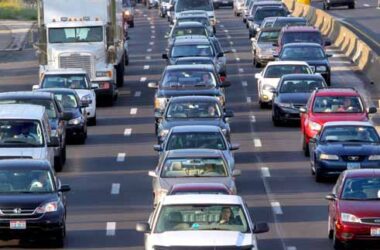
THERE is the general belief that government spending can create economic growth in Saint Lucia, and in support of that view one will hear the commentary on the street that ‘things slow’ because the government is not spending. I read a research paper from the Central Bank of Barbados entitled: Government Expenditure and Economic Growth in a Small Open Economy – A Disaggregated Approach written by Justin Carter, Roland Craigwell and Shane Lowe. I would safely assume that there are similarities between the economy of Barbados and Saint Lucia such that the conclusions drawn from the research can be applicable.
The shocking conclusions were as follows:
a. government expenditure in health and social programmes has little influence on per capita economic growth.
b. government expenditure on education has a significant negative impact on economic growth
The findings go contrary to traditional economic thought. It is expected that government expenditure in health care would result in a more productive labour force and hence expanded economic activity. Similarly, increased expenditure in education should result in a more educated work force and also expanded economic activity. However the conclusions may also point to failures in our health care and education systems.
So let us extend these conclusions to the St Lucian context. Over the last 25 years, St Lucia may have allocated close to $ 1.0 billion to the Ministry of Education. These funds have gone into building primary schools many of which are now under populated. There was no planning in the location of these schools, construction was driven by political expediency, and now we have primary schools in which half of the total classrooms are empty. We moved to universal secondary education, which placed children in secondary schools who cannot read and write, some obtaining zero in maths at the Common Entrance Examination and by some miracle were expected to understand matrices and binary systems.
Expenditure on our education system has resulted in negative impact on economic growth. Can these empty primary school classrooms be leased out to young entrepreneurs to start a pre-school, or a retired teacher to give private adult education classes? Should some of these secondary schools be converted to full technical schools, teaching trades such as plumbing, tiling, masonry, electrical wiring.
Expenditure in the health sector has been dominated by construction of new hospitals and health centres. Have we seen a consequential effect of a more productive workforce? I do not think so, as we are still battling with chronic diseases at an increasing level.
While I fully support the various social programmes, as much needed assistance to the unemployed, in the context of economic growth, there is little contribution from these social programmes.
The research done by the Central Bank of Barbados did not look at government expenditure on construction and its contribution to economic growth. I would want to touch on this as this expenditure has to be segregated. Construction expenditure in construction with high import content of materials or services contributes little to economic growth. Let us take the Bois d’Orangebridge for example. There was a Colombian contractor who brought in their specialist equipment to do the piling. The structural steel beams were imported from the UK. The import content for that project for material and services is estimated at 70 %. The ALBA Bridge at Dennery used a Barbadian firm to do the piling, the piles were imported, and there was a French main contractor.
In the health sector, the construction of a hospital has a high import content. On the national hospital, imported materials and services in my estimate approximated to 70% of the cost. So while hundreds of millions have been spent in these construction activities, very little is contributing to economic growth.
As a recurring decimal, I will again suggest that a National Drainage Programme is the best approach to create economic growth in Saint Lucia at this time. The machines that are now idle have been paid off at this stage by most local equipment owners. The only imported material to create activity is fuel and lubricants. The cement is a regional product. The aggregates and sand for the concrete and blocks are both sourced locally. The concrete blocks are produced locally.
Assuming a contractor has to build 100 metres of drains. He has to engage a backhoe for a couple days, together with a truck for disposal. Another trucker gets a job to supply concrete, another to transport the blocks, steel and lumber. On site there will be masons, carpenters and labourers. This small project would have put almost 20 people into some level of activity. Imagine this is reproduced over 1,000 times in a $ 30.0 million programme.
The effect on the infrastructure will also be dramatic in reducing the damaging effects of uncontrolled run-off. I did a bit of research on the Barred’Isle, looking at the areas where the land slippage occurred during Hurricane Tomas. Most of the slippage occurred in areas where drainage along the cliff side was absent and the cascading effect occurred over the side, causing some of the slippages. I saw the full effect of this phenomenon during heavy rainfall while driving in the Millet area a couple years ago. A simple kerb and slipper which is regularly maintained would have saved millions of dollars in repair work.
As the Minister of Finance puts together the Budget Address for 2015-2016, I submit the National Drainage Programme funded to the tune of $ 30.0 million, as the most comprehensive approach to stimulating the local economy. I would also suggest to the East Caribbean Central Bank to pursue similar research to guide government expenditure in our small open economies of the OECS.












No government has ever gone bankrupt as a result of investing in meaningful infrastructure – roads, tunnels, bridges, etc.; but several have gone bankrupt as a result of investing in health, education and other social programs.
It’s a tight rope that any good finance minister would have to walk.
People will not have a meaningful understanding of ‘Government’ until they realise the nature of where the money comes from. It’s either borrowed or gained from taxes. As the tax base in st lucia is low, and collection methods poor – the default route is borrowing. The nature of successful health and education spending is much more difficult to quantify compared to a bridge or a road because this type of spending;
a) tends to benefit the individual
b)tends to benefit the service provider
c) results take a long time to come through
Will the spending on that individual be recouped via the taxes they provide? No it never is (see the huge deficits being run all over the world.) This is because people want social programs that by their very nature, are revenue negative. Health spending is a never ending pit of money – you could give every single person a million dollars in health care, and there would still be a way for it to be misspent.
People try and say that society as a whole benefits from a well educated society, but I think this is only true up to a basic level (16 years old). Once people can read, write, behave themselves, and develop a reasonably inquisitive mind, they will be good citizens. St Lucia is failing at the primary level of education, in the most comprehensive manner. Many aren’t equipped with the mental tools to see that their own Party is just as bad as the other, and everyone has been eating dog shit masquerading as chocolate.
SOME SOLUTIONS
Government spending plans need to start again. That can’t happen until most voters can agree on a common set of priorities (Fetes? Roads? Hospitals? Police? Schools? Free chicken?) I suggest:
1 Government needs to have laws which protect the land and the sea and the environment, as this is the basis for all civilised life on the island. This includes agriculture and water provision. It also has the benefit of being the number one way of generating some FX, via the tourism product. Nobody wants to come to a dirty ‘tropical’ island. Fact. So people need to be taxed sufficiently to maintain the common infrastructure necessary to support the bare essentials of life.
2 Government needs to ensure every child has a comprehensive education up to 16 years old. They must leave school literate and numerate. This requires enough taxation (and good people having children) to enable an education system. Educate does not mean learning a set of facts, it means acquiring critical mental faculties of reasoning and deduction.
3 Government needs to maintain law and order and a functioning tax collecting, judicial and penal system. Economic prosperity and the ability to levy taxes to pay for 1 and 2 above, comes from people acquiring and trading economic property rights of one form or another. There needs to be an efficient process for dealing with disputes and keeping people safe.
In addition, Governments should always be looking to see if they can reduce the tax burden on EVERYONE by introducing programmes which are self-financing such as toll roads. Good civic society allows people to keep as much money in their pockets for discretionary spending.
When you look around you, until you can say these THREE things have been done adequately, you haven’t got your priorities right.
Very Good proposal Mr Engineer:
Very good responses
The drainage system could also contribute (in some areas) to a controlled network for recycling objectives, e.g., introducing or maintaining agricultural irrigation for cash crops cultivation (e.g., cocoa or citrus) in more arid or poor soil zones.
The Aztecs built a kingdom from their central location by engineering the controls necessary over the surrounding lakes and tributary waters. As a result surplus food was possible, dry stable land for building construction became available and a system of causeways made transport and communication most expedient.
Alas, Cortez had to introduce disease and connive with their local enemies to close a cultural engineering marvel.
Additionally, the Incas systen of terrace agriculture, also utilized by rural China for rice cultivation; has smaller but significant potential in some areas of St. Lucia.
I seriously doubt that Tomas would have impacted the Fond St Jacques area ,if the combined synergy of a properly articulated drinage system and terraced agriculture & building construction engineering best practices were in place.
Someday, sir, they shall comb your proposals, hopefully, the time will not mimic that of of the flawed Titanic engineering design and its arrogant disaster aversion protocols.
Please keep up your righteous engineering crusade
Eng. Peters. Please present that proposal with a pattern right stamp, to The National Vision Commission and hopefully. Invest Saint Lucia will come on board. Keep giving ’em Hell…